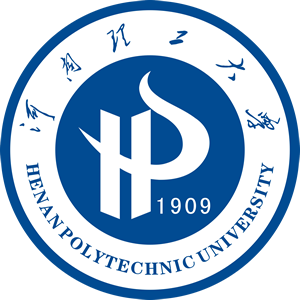| 时间: 2024-09-24 | 次数: |
张安超, 张景繁, 张丹,等.微球状Br掺杂BiOCl复合光催化剂去除单质汞研究[J].河南理工大学学报(自然科学版),2024,43(6):90-99.
ZHANG A C, ZHANG J F, ZHANG D,et al.Study on the removal of elemental mercury by microspherical Br-doped BiOCl comosite photocatalyst[J].Journal of Henan Polytechnic University(Natural Science) ,2024,43(6):90-99.
微球状Br掺杂BiOCl复合光催化剂去除单质汞研究
张安超, 张景繁, 张丹, 孙志君, 张旭, 刘艳雯, 郑海坤
河南理工大学 机械与动力工程学院,河南 焦作 454000
摘要:光催化氧化法是治理大气环境汞污染问题的有效手段。 目的 为开发低成本的可见光脱汞催化剂, 方法 采用一步共沉淀法合成不同溴(Br)含量的![]() 微球复合材料,在湿法光催化脱汞装置上考察它们在荧光灯辐照下的光催化活性,利用N2吸附-脱附、XRD、UV-Vis DRS、SEM、HRTEM、XPS和ESR等技术对其结构进行分析,并采用密度泛函理论研究BiOCl和BiOBr之间的电荷转移规律。 结果 结果表明,相较于BiOCl和BiOBr,
微球复合材料,在湿法光催化脱汞装置上考察它们在荧光灯辐照下的光催化活性,利用N2吸附-脱附、XRD、UV-Vis DRS、SEM、HRTEM、XPS和ESR等技术对其结构进行分析,并采用密度泛函理论研究BiOCl和BiOBr之间的电荷转移规律。 结果 结果表明,相较于BiOCl和BiOBr,![]() 复合材料的光催化性能均得到提升,其中BiOBr0.2Cl0.8光催化剂的脱汞效率高达90.3%,较BiOCl提高了50%;与
复合材料的光催化性能均得到提升,其中BiOBr0.2Cl0.8光催化剂的脱汞效率高达90.3%,较BiOCl提高了50%;与 ![]() 和
和 ![]() 相 比 ,Cl− 和
相 比 ,Cl− 和![]() 对 BiOBr0.2Cl0.8 光 催 化 剂 脱 汞 性 能 的 抑 制 作 用 更 显 著 ;光催化剂脱汞性能的抑制作用更显著;BiOBr0.2Cl0.8复合材料的比表面积均略高于BiOBr的和BiOCl的,较高的比表面积有利于光催化剂提供较多的活性位;随着Br含量逐渐增加,BiOCl的XRD特征峰强度逐渐减弱,复合材料的光吸收能力有规律地红移,表明BiOBr与BiOCl之间存在较强的相互作用,并非简单的机械混合;与BiOCl相比,BiOBr0.2Cl0.8复合材料的Bi 4f和O 1s均向高结合能方向偏移,表明引入Br影响了BiOCl中Bi和O的存在形态;3种活性物参与了Hg0的氧化脱除过程,其作用由大到小依次为
对 BiOBr0.2Cl0.8 光 催 化 剂 脱 汞 性 能 的 抑 制 作 用 更 显 著 ;光催化剂脱汞性能的抑制作用更显著;BiOBr0.2Cl0.8复合材料的比表面积均略高于BiOBr的和BiOCl的,较高的比表面积有利于光催化剂提供较多的活性位;随着Br含量逐渐增加,BiOCl的XRD特征峰强度逐渐减弱,复合材料的光吸收能力有规律地红移,表明BiOBr与BiOCl之间存在较强的相互作用,并非简单的机械混合;与BiOCl相比,BiOBr0.2Cl0.8复合材料的Bi 4f和O 1s均向高结合能方向偏移,表明引入Br影响了BiOCl中Bi和O的存在形态;3种活性物参与了Hg0的氧化脱除过程,其作用由大到小依次为![]() ,h+,·OH。 结论 光催化活性的提高主要原因为BiOCl与BiOBr形成了Z型异质结,从而增强了光生电荷的分离。研究结果可为低成本、高效卤氧化铋基脱汞光催化剂的开发提供新思路。
,h+,·OH。 结论 光催化活性的提高主要原因为BiOCl与BiOBr形成了Z型异质结,从而增强了光生电荷的分离。研究结果可为低成本、高效卤氧化铋基脱汞光催化剂的开发提供新思路。
关键词:光催化剂;氯氧化铋;溴氧化铋;单质汞脱除
doi:10.16186/j.cnki.1673-9787.2022020067
基金项目:国家自然科学基金资助项目(51676064);河南省高校科技创新人才资助项目(19HASTIT045);河南理工大学创新型科研团队资助项目(T2020-3)
收稿日期:2022/02/27
修回日期:2022/04/13
出版日期:2024-09-24
Study on the removal of elemental mercury by microspherical Br-doped BiOCl comosite photocatalyst
ZHANG Anchao, ZHANG Jingfan, ZHANG Dan, SUN Zhijun, ZHANG Xu, LIU Yanwen, ZHENG Haikun
School of Mechanical and Power Engineering,Henan Polytechnic University,Jiaozuo 454000,Henan,China
Abstract:Photocatalytic oxidation is an effective technology to control atmospheric mercury pollution. Objectives To develop a low-cost visible-light-driven mercury removal catalyst, Methods microspherical ![]() composite photocatalysts with different molar contents of bromine(Br) were synthesized by an one-step coprecipitation method,and their photocatalytic performances of Hg0 removal under fluorescent lamp(FSL) were implemented in a wet photocatalytic mercury removal device.The physical and chemical structures of the samples were analyzed by N2 adsorption-desorption,XRD,UV-Vis DRS,SEM,HRTEM,XPS and ESR.Moreover,the charge transfer between BiOCl and BiOBr was studied using density functional theory. Results The results showed that compared with BiOCl and BiOBr,the photocatalytic performances of
composite photocatalysts with different molar contents of bromine(Br) were synthesized by an one-step coprecipitation method,and their photocatalytic performances of Hg0 removal under fluorescent lamp(FSL) were implemented in a wet photocatalytic mercury removal device.The physical and chemical structures of the samples were analyzed by N2 adsorption-desorption,XRD,UV-Vis DRS,SEM,HRTEM,XPS and ESR.Moreover,the charge transfer between BiOCl and BiOBr was studied using density functional theory. Results The results showed that compared with BiOCl and BiOBr,the photocatalytic performances of ![]() composites were all improved,and the Hg0 removal efficiency of BiOBr0.2Cl0.8 photocatalyst reached as high as 90.3%,which was about 50% than that of pure BiOCl.Compared with
composites were all improved,and the Hg0 removal efficiency of BiOBr0.2Cl0.8 photocatalyst reached as high as 90.3%,which was about 50% than that of pure BiOCl.Compared with ![]() and
and ![]() ,Cl− and
,Cl− and ![]() exhibited significant inhibitions on Hg0 removal.The specific surface area of BiOBr0.2Cl0.8 composites was slightly higher than that of BiOBr and BiOCl,which would be beneficial for providing more reactive sites.With the gradual increase of Br content,the XRD characteristic peak intensity of BiOCl gradually decreased,and the photocatalytic absorption capacity appeared redshift regularly,indicating a strong interaction between BiOBr and BiOCl,not a simple mechanical mixing.Both Bi 4f and O 1s of the BiOBr0.2Cl0.8 composite material were shifted towards higher binding energies,indicating that the introduction of Br affected the species of Bi and O in BiOCl.The mechanism analysis displayed that the three active species were involved in the oxidative process of Hg0 removal with the high-to-low order of
exhibited significant inhibitions on Hg0 removal.The specific surface area of BiOBr0.2Cl0.8 composites was slightly higher than that of BiOBr and BiOCl,which would be beneficial for providing more reactive sites.With the gradual increase of Br content,the XRD characteristic peak intensity of BiOCl gradually decreased,and the photocatalytic absorption capacity appeared redshift regularly,indicating a strong interaction between BiOBr and BiOCl,not a simple mechanical mixing.Both Bi 4f and O 1s of the BiOBr0.2Cl0.8 composite material were shifted towards higher binding energies,indicating that the introduction of Br affected the species of Bi and O in BiOCl.The mechanism analysis displayed that the three active species were involved in the oxidative process of Hg0 removal with the high-to-low order of ![]() ,h+,·OH. Conclusions The improvement of photocatalytic activity was mainly due to the formation of Z-type heterojunction between BiOCl and BiOBr,which effectively enhanced the separation of photo-generated charges.The study provided a new idea for the development of low-cost and efficient bismuth oxyhalide-based photocatalysts for mercury removal.
,h+,·OH. Conclusions The improvement of photocatalytic activity was mainly due to the formation of Z-type heterojunction between BiOCl and BiOBr,which effectively enhanced the separation of photo-generated charges.The study provided a new idea for the development of low-cost and efficient bismuth oxyhalide-based photocatalysts for mercury removal.
Key words:photocatalyst;BiOCl;BiOBr;the removal of elemental mercury
- 附件【010_2022020067_张安超.pdf】已下载次


